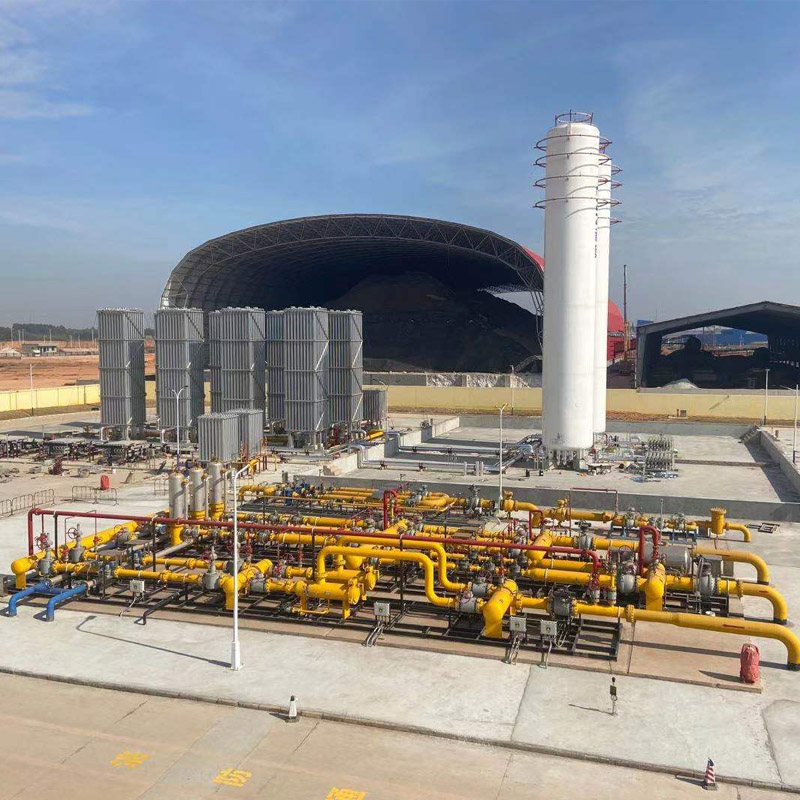
10 月 . 10, 2024 12:17
Back to list
gas pressure reducing station
Gas Pressure Reducing Station Ensuring Safety and Efficiency in Gas Distribution
Gas pressure reducing stations (PRSs) are critical components in the natural gas distribution network. They play a vital role in ensuring that gas is delivered at a safe and usable pressure to end-users, whether residential, commercial, or industrial. This article explores the function, design, and importance of gas pressure reducing stations in the context of modern gas infrastructure.
Understanding Gas Pressure Reducing Stations
A gas pressure reducing station is designed to reduce high-pressure gas from transmission pipelines to a lower pressure suitable for local distribution systems. Natural gas is transported over long distances under high pressure to ensure efficient flow. However, the pressure must be lowered before reaching consumers to prevent damage to appliances and ensure safe usage. PRSs achieve this by utilizing various types of pressure regulators, which automatically adjust the flow rate and pressure of the gas.
Components of a Gas Pressure Reducing Station
Typically, a gas pressure reducing station consists of several key components
1. Inlet and Outlet Valves These valves control the flow of gas into and out of the station. They provide a means to isolate the station for maintenance or emergencies.
2. Pressure Regulators The heart of any PRS, these devices reduce the gas pressure to a predetermined level. Depending on the system design, this could involve multiple regulators in series or parallel configurations.
3. Filters To ensure gas quality, filters remove impurities and particulate matter that could hinder the performance of downstream equipment.
4. Safety Devices Safety is paramount in gas systems. PRSs are equipped with safety valves, pressure relief valves, and monitoring systems to prevent overpressure situations and ensure operational safety.
gas pressure reducing station

5. Measurement Instruments Pressure and flow measurement devices are installed to monitor the performance of the PRS and provide crucial data for operators.
The Importance of Safety in PRS Design
The design and operation of gas pressure reducing stations are heavily influenced by safety regulations and standards. Gas leaks can pose significant risks, including explosions and environmental hazards. Therefore, engineers must adhere to strict codes, ensuring that all components of the PRS are built to withstand the operational pressures and conditions they will face.
Regular maintenance and inspection of PRSs are also essential. Operators need to ensure that all safety devices are functioning correctly and that any signs of wear or malfunction are addressed promptly. The integration of modern technology, such as remote monitoring and control systems, has enhanced the ability to detect issues before they lead to failures, further improving safety.
Economic and Environmental Aspects
Efficiently operated gas pressure reducing stations do not only guarantee safety but also economic benefits. By ensuring the proper pressure for distribution, PRSs help minimize gas losses and improve overall system efficiency. This efficiency translates to cost savings, as less gas is wasted in the distribution process.
Additionally, maintaining the integrity of gas supply through well-functioning PRSs has positive environmental implications. By reducing the likelihood of leaks and ensuring systematic gas flow, PRSs contribute to a lower carbon footprint and support the transition towards cleaner energy sources.
Conclusion
Gas pressure reducing stations are an indispensable part of gas distribution infrastructure. By transforming high-pressure gas into a safe, usable form, PRSs facilitate the reliable delivery of energy to millions of consumers. The design and operation of these stations prioritize safety, efficiency, and economic viability, making them a cornerstone of modern energy management. As the demand for natural gas increases and the energy landscape evolves, the roles of PRSs will continue to be critical in achieving a balance between energy supply, safety, and environmental stewardship.
Latest news
-
Unlocking The Quality Gas Pressure ReducersNewsNov.01,2024
-
The Role of Gas Pressure Reducing StationsNewsNov.01,2024
-
The Importance and Functionality of Safety Relief ValvesNewsNov.01,2024
-
The Essential Role of Safety Valves in Natural Gas ApplicationsNewsNov.01,2024
-
The Essential Role of Gas Pressure RegulatorsNewsNov.01,2024
-
Enhance Your Premium Gas FiltersNewsNov.01,2024

